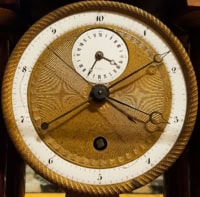
An antimatter experiment at CERN reveals that the hyperfine splitting of antihydrogen is the same as that of hydrogen to four parts in 10,000. The research was done by physicists working on the ALPHA-2 experiment, who describe the work as an important step towards measuring the spectral lines of antihydrogen – something that could lead to the discovery of new physics.
Antihydrogen is the antimatter version of hydrogen and comprises an antiproton bound with an antielectron (positron). According to the Standard Model of particle physics, physical properties of antihydrogen such as hyperfine splitting should be identical to that of hydrogen. Physicists are therefore very keen to find discrepancies between hydrogen and antihydrogen, which would point to new physics beyond the Standard Model. Such a discovery could, for example, help explain why there is much more matter than antimatter in the universe.
In atomic hydrogen, hyperfine splitting is a result of the interaction between the magnetic moments of the nucleus and the electron. This splitting has been measured to a precision of seven parts in 1013 – providing the first evidence for the anomalous magnetic moment of the electron; inspiring the relativistic theory of quantum electrodynamics; and leading to the development of the hydrogen maser.
Mixing plasmas
The ALPHA-2 experiment receives its antiprotons from the CERN Antiproton Decelerator and its positrons are produced by radioactive decay. In a typical experimental run, the team mixes cold plasmas containing about 90,000 antiprotons and 1.6 million positrons to create about 25,000 antihydrogen atoms. Most of these atoms have far too much kinetic energy to be useful so the vast majority are discarded. This leaves about 20 atoms, which are held in a superconducting magnetic trap. If the mixing process is repeated, up to 74 atoms can be accumulated for study.
In the presence of the trap’s magnetic field, the hyperfine energy levels are further split into two distinct pairs of states. One pair is “trappable” – atoms in those two states will remain in the trap. The other pair is “untrappable” – atoms in those two states will quickly be lost from the trap.
Measurements are made by applying microwave radiation to the trapped atoms. If the frequency of the microwaves matches the frequency associated with a transition from a trappable to an untrappable state, some of the atoms will become untrapped and will annihilate on the inner surface of the trap. This annihilation releases a significant amount of energy, which is captured by special detectors.
Twin peaks
The experiment involves slowly scanning the microwave frequency and measuring the number of annihilation events. The result is two peaks, with the hyperfine splitting corresponding to the energy difference between the peaks.
The team’s measured value for antihydrogen hyperfine splitting (expressed in terms of photon frequency) is 1420±0.5 MHz, which agrees with the measured value for hydrogen to four parts in 10,000.
Although the measurement provides no evidence that the physics of antihydrogen is any different to that of hydrogen, the team says that it opens the door to more precise measurements of the spectrum of antihydrogen. Writing in Nature, the team points out that future measurements of the shape of antihydrogen spectral lines could reveal new physics.



